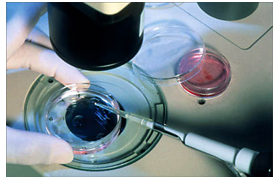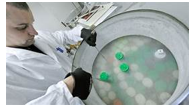Artificial Reproductive Technology (ART) is the technology used to obtain pregnancy in procedures such as fertility drugs, IVF, and sweets. The reproductive technology that is mainly used in the treatment of infertility, also known as a fertility treatment. It is predominantly in the field of endocrine genetics and infertility and may also include intracranial sperm injection (ICSI) and cryopreservation.

Need for fertility treatment
One of the leading reasons for the escalating demand for fertility treatment is the general choice to delay childcare. Today, it is common for couples to plan to have children in the late stages of marriage. Low fertility rates in females with age. It is difficult for women over the age of 40 to become pregnant naturally, which is why most elderly couples opt for fertility treatment in the laboratory when planning to have children. They realized that the more the child was born, the better the fertility and quality of the woman.

Men continue to produce sperm in their lives. However, women have a limited number of oocytes at birth, called the ovarian reserve. With each menstrual cycle, the number of eggs decreases and egg quality deteriorates with age. India provides spermatozoa to Indian patients for donors and specialized donors. Native Americans can take advantage of this option if necessary. However, non-local patients need to provide their donors when required.
Technology helping in mechanical reproduction
Technology companies are also the most comprehensive in vitro fertilization offers, allowing employees to perform various types of non-restrictive treatments based on their status (e.g., gay couples seeking alternative mothers or single mothers subject to artificial insemination). Technology can escalate the already expanding trend, change the way we think about fertility and radically change our society. The several types of artificial reproductive technologies techniques are as follows:
- In vitro fertilization: Approximately 99% of the antiretroviral therapy performed in the United States is in vitro fertilization. Combine eggs with your partner sperm into the laboratory. After fertilization, the resulting fetus develops for three to five days before being transferred to the uterus.

- Intracytoplasmic sperm injection: Two-thirds of all in vitro fertilization cycles completed in the United States use ICSI as a fertilization method. Sperm is injected directly into the egg, instead of putting a little sperm next to the egg, as in artificial insemination. After fertilization, the resulting embryos are cultured for three to five days before being transferred to the uterus.
- Donor egg or embryo: If you cannot get your egg, you can use an egg donated by another woman for in vitro fertilization. The donor egg is combined with the sperm of the partner, and the embryo is transferred to the uterus. This procedure can also be done with donor embryos or donated sperm.

- Surrogacy: There are two types of subrogation – traditional alternatives to mothers and gestational pregnancy. In traditional surrogacy, artificial mothers are vaccinated manually by a predetermined parent or anonymous donor and run with their children. Therefore, the child has a genetic relationship with the surrogate mother; the mother provides the egg, the pregnant parent or the anonymous donor. In gestational pregnancy, the egg is removed from the intended mother or anonymous donor and fertilized with sperm from the intended parent or anonymous donor. Then the fertilized egg or embryo is transferred to the child’s alternative. Therefore, children are genetically related to women who donate eggs and donate fathers or sperm donors but are not wildcards.


















